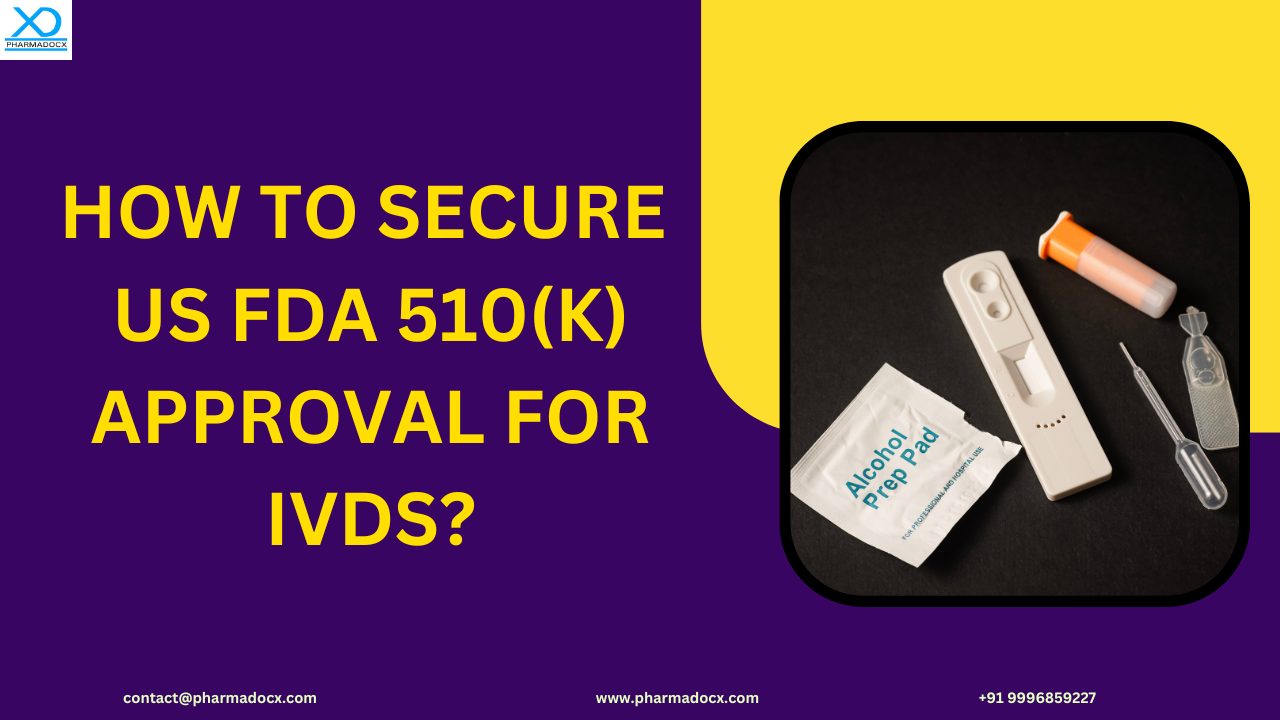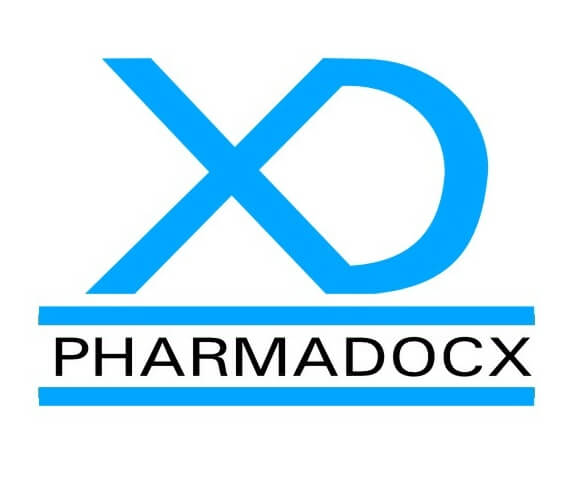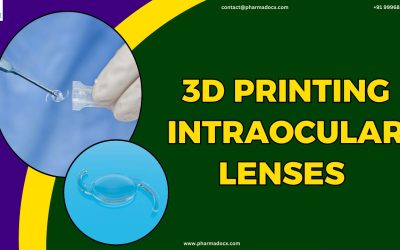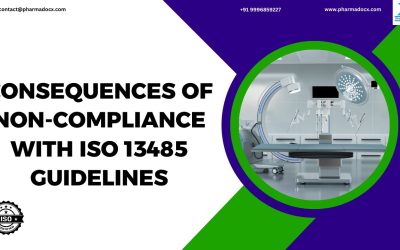The US FDA 510(k) approval process authorizes the marketing of IVDs in the US. Through this process the Food and Drug Administration (FDA) evaluates device safety and effectiveness before releasing it in the market. Hence, compliance with US FDA regulations is mandatory for marketing and distributing IVDs in the U.S. We have prepared a detailed guide to help you easily secure the US FDA 510(k) approval for IVDs.
What are IVDs or In-Vitro Diagnostic Devices?
In vitro diagnostic devices are basically kits, instruments, reagents, and systems to be used for diagnosing diseases and health conditions. These tests are usually performed in test tubes and similar equipment outside the body. IVDs are used to collect and examine specimens obtained from the human body. Moreover, IVDs are used to determine the current state of health to understand the course of treatment required.
In vitro diagnostic tests can be performed using various instruments from small handheld devices to complex laboratory equipment. These tests can be performed at the patient’s homes, laboratories, or health care facilities. Moreover, IVD devices are used for testing patients in the primary health care facilities where labs are not available. Given the role of IVDs in patient diagnosis, stringent regulations for invitro diagnostic devices are required for patient safety and improved healthcare delivery.
Understanding US FDA 510(k) approval for IVDs
Patient safety and outcome depends on the quality and effectiveness of IVDs. Thus, rigorous regulatory standards have been formulated for IVDs. The US FDA 510(k) approval process is used to evaluate the safety and effectiveness of IVDs and authorize their marketing in the United States. The US FDA 510(k) approval for IVDs involves a thorough review of the design, performance, labelling, and manufacturing process of the device.
What is US FDA 510(k)?
The FDA 510(k) is used to determine whether the IVD is safe and effective and can be legally permitted in the US market. The US FDA 510(k) is used to demonstrate the device in question is as safe and effective as the “substantially equivalent” predicate device being sold legally in the US. The process involves evaluating and comparing the device with the “substantially equivalent” predicate device. Furthermore, US FDA 510(k) dossier containing supporting documents have to be prepared and submitted. Then, after reviewing the application and verifying the document, the FDA will clear the device for sale and marketing in the US. Additionally, they will issue a 510(k) number. After which, the number with device details will be uploaded to the 510(k) database.
Thus, the US FDA 510(k) approval process involves proving the new IVD, having similar intended use and technological characteristics, is as safe and effective as the predicate device. Companies use this process to bring new IVDs to the US market.
US FDA IVD classification system
The FDA has classified IVDs into three main classes based on their intended use and risk level for patients and users. Depending on the risk level, different pathways for US FDA 510(k) approval for IVDs are in place. The different regulatory pathways for market clearance range from 510(k) clearance for Class I and some Class II devices to premarket approval (PMA) for Class III devices. Hence, understanding the US IVD classification system is crucial for manufacturers to secure the US FDA 510(k) approval for IVD. We have provided an overview of the US IVD classes:
- Class I IVDs: Low to moderate-risk IVDs that are well understood and pose minimal risk to patients are classified as Class I IVDs. Examples: Certain general laboratory reagents and controls.
- Class II IVDs: Moderate to high-risk IVDs requiring special controls to ensure safety and effectiveness are classified as Class II IVDs. Examples: enzyme-linked immunosorbent assays (ELISAs), some types of microbiology culture media, and home pregnancy tests.
- Class III IVDs: High-risk devices that are critical to public health and safety or those that are new and innovative are classified as Class III IVDs. These devices typically require premarket approval (PMA) before they can be launched in the US market. Examples: HIV diagnostic tests and companion diagnostic devices.
Correctly identifying the predicate device
The predicate device has a crucial role in successful FDA 510(k) approval. The IVD manufacturer is required to provide convincing evidence that the new device is substantially equivalent to the predicate device. Although both devices need not be identical, the new device should be at least as safe and effective as the predicate device. Hence, it is crucial to correctly identify a predicate device. If you choose an incorrect predicate device, the FDA may reject the application. Thus, manufacturers should cautiously identify a predicate device. Factors to keep in mind while choosing 510(k) predicate device:
- The broad intended use of the predicate device should be similar to that of the new device.
- Technological characteristics of the predicate device should be similar to that of the new device in question.
- The predicate device should be equipped with the latest medical technology.
- Biocompatibility of both the device needs to be comparable.
- The manufacturing process and additional chemicals should also be taken into consideration.
6 pro tips for dossier preparation for US FDA 510(k) approval for IVDs
The US FDA 510(k) dossier is vital for US FDA 510(k) approval for IVDs. The dossier must contain device descriptions, design, performance data, labelling, and post-market plans. Additionally, it should provide details on clinical studies and biocompatibility tests. It has to be submitted for the grant of marketing authorization. Basically, it is a compilation of documents containing the IVDs’ safety, efficacy, and quality information. Notably, the US FDA 510(k) dossier is used to demonstrate regulatory compliance. The US FDA 510(k) dossier has to be prepared properly as per guidelines for a speedy regulatory journey. Moreover, a well-prepared dossier has a high chance of rapid approval. We have provided some tips to help you prepare the US FDA 510(k) dossier.
- Provide a clear description of the IVD mentioning its intended use, specifications, and essential components.
- The US FDA 510(k) dossier should detail the IVD’s design and manufacturing process. Additionally, it should also mention the quality control measures for the IVD.
- Data demonstrating the device’s effectiveness and reliability has to be highlighted.
- Data obtained from clinical studies that demonstrate the IVD’s safety and performance in real-world scenarios have to be included.
- Biocompatibility test findings are a crucial requirement of the US FDA 510(k) dossier.
- The dossier should clearly mention the post-market surveillance plans for continuous safety and performance monitoring.
Common challenges faced while securing US FDA 510(k) approval for IVDs
Securing US FDA 510(k) approval for IVDs can be a tricky task. Understanding and navigating the regulatory guidelines can be challenging. We have highlighted some of the common challenges faced during US FDA 510(k) IVD approval application.
- Identifying the appropriate predicate device
- Conducting comprehensive testing and validation studies
- Compiling a thorough US FDA 510(k) dossier per regulatory guidelines
- Staying abreast of the constantly changing US FDA regulatory guidelines for IVDs
How can Pharmadocx Consultants help you easily secure the US FDA 510(k) approval for IVDs?
We are a renowned US FDA 510(k) consultant for IVDs and medical devices. We will work closely with you to develop a customized regulatory strategy tailored for your product. Our team of seasoned professionals is well-versed with FDA regulations and submission requirements. We will help:
- Identify FDA product code and applicable regulations
- Identify predicate device
- Compile necessary supporting document
- Evaluate substantial equivalence
- Create 510(k) technical documents
- Respond to FDA queries
- Act as a communication bridge between you and the FDA
We will work relentlessly to help you secure the US FDA 510(k) approval for IVDs in a hassle-free manner. Drop an email at [email protected] or call/Whatsapp on 9996859227 to have a smooth US FDA journey.





